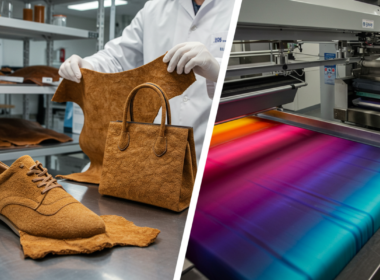In Ferrara, Alvisi Kirimoto undertakes the restoration of the Contemporary Art Pavilion to create Spazio Antonioni, a vibrant museum and center for education and discovery center dedicated to the Ferrara-born filmmaker Michelangelo Antonioni. The museum hosts a permanent exhibition exploring the maestro’s valuable work, and provides a versatile space for temporary exhibitions, events, screenings, and workshops.
Strategically located in the city near major cultural venues such as Palazzo dei Diamanti and Palazzo Massari, this historical two-story pavilion of approximately 300 square meters per floor is ideally situated at the entrance of Massari Park. Serving as a crucial link between the park and nearby institutions, Spazio Antonioni completes the area’s museum circuit.

“The project envisions creating a space that serves as Antonioni’s home in Ferrara, offering more than a traditional museum experience. We aim to open a space where the treasure that Michelangelo left behind can be fully appreciated—not just seen and forgotten. A place that deeply moves and transforms its visitors, designed to be a dynamic environment that encourages exploration and personal transformation within the enchanting ambiance of Ferrara.”— explains Enrica Fico Antonioni.

The space is crafted around Dominique Païni’s curatorial vision, which divides the museum into thematic areas that cater to a diverse audience including tourists, filmmakers, students, and enthusiasts.
The visitor experience is designed to be clear, fluid, and dynamic, echoing one of Antonioni’s cinematic sequence shots. The ground floor features five solid exhibition partitions that segment the space into various thematic areas, while the first floor is designed for maximum flexibility.
Upon entering, visitors are immersed in Antonioni’s world, navigating various life stages from his early years in Ferrara to his acclaimed work like Red Desert.
“We wanted to create an abstract space, defined by neutral surfaces and colors that enhance both the dynamic spatial experience and the moments of deep reflection and discovery.”— says Architect Junko Kirimoto, co-founder of the studio.
As the experience progresses, the exhibit panels’ gray-scale crescendo mirrors the meticulously crafted atmospheres of the director:

“Photography is very important to me because it allows me to establish a more precise relationship between character and landscape, something I’ve always been concerned with. Gray tones and overcast skies are often features of my films. Is it a figurative preference? Not just that. The truth is, when there’s no sun, I can shoot with more freedom; it’s also a practical choice. With the sun, camera angles are constrained. If the sun is behind the camera, there’s a shadow. If it’s in front, it gets into the shot, limiting angles and perspectives. Since one of my main concerns is to follow the character closely, the lack of sun allows me to do so more freely and deeply.”— from Fare un film è per me vivere – Scritti sul cinema by Michelangelo Antonioni.

The exhibition spaces on the ground floor encompass equal-sized partitions that organize the museum itinerary and create lateral visual corridors. These structures facilitate an integrated media display, alternating between solid walls for artwork and embedded monitors for showcasing films, documents, and photographs.
The choice of highly textured finishes, such as resin floors and lava stone for the staircase, is combined with meticulous attention to detail, which enhances even technical elements like hinges or metallic support feet, deliberately left in view:
“We had the opportunity to collaborate directly with Michelangelo Antonioni in 2006, for the setup of his paintings at the exhibition Il Silenzio a Colori at the Temple of Hadrian in Rome. For the maestro, the way the painting was hung was as important as the painting itself, and this devotion to detail, both in front of and behind the camera, is what we wanted to translate into architecture.”— explains Architect Massimo Alvisi, co-founder of the studio.


A major focus of the exhibition is Antonioni’s connection to Ferrara, highlighted by reopening original structural elements to directly link the museum and the cityscape.
The first floor features adaptable panels that can be rearranged to suit various museum functions, from film screenings and conferences to educational workshops. This flexible design extends the permanent exhibition and accommodates temporary installations, like the upcoming exhibition Fuori fuoco: Giorgio Morandi / Cy Twombly curated by Andrea Bruciati, running until 29 September 2024.
In keeping with the ground floor, the first floor’s panels incorporate glass cases and highlight the mechanical components used for their movement, aligning with the museum’s theme of transparency and adaptability.
Through the restoration of several original windows, this level re-establishes a strong visual and spatial connection with Ferrara, directly linking the museum to Palazzo Massari and the park. This connection marks the concluding section of the exhibition, Il Ritorno in Italia, which also celebrates the director’s career achievements.

Each floor features two immersive audiovisual rooms equipped with state-of-the-art technology, dedicated to showcasing films referenced throughout the museum.
The restoration project, which also involved the design of acoustics, climate control, and lighting systems for optimal museum use and management, included the following: reconstruction of structural elements such as the staircase, intermediate floor, and ground floor pillars; restoration of exterior features like the entire roof and the complete facade of both the PAC and the adjacent building; renovation of the ground floor slab and all perimeter walls and replacement of existing windows.
To integrate the project into the urban fabric, the exterior areas were redesigned as a natural extension of the interiors, aligning with the renewed openness and accessibility of the museum. Stay up to date on the newest in the world of Fashion, Arts, Beauty and Lifestyle; Follow FAB on Instagram.

The project, designed to enhance the accessibility and appreciation of Michelangelo Antonioni’s cultural legacy, enriches Ferrara’s cultural landscape and establishes a new landmark for cinema enthusiasts.
More Like This:
In Italy, Sundays are like holidays – Chef Michelangelo Sparapano
At the Cannes Film Festival, Matchless celebrates its 125th anniversary











